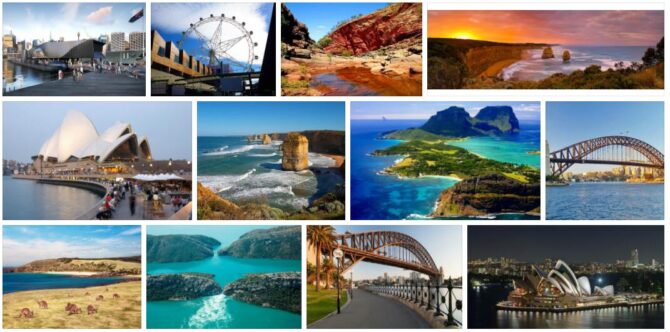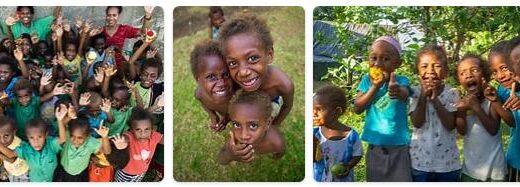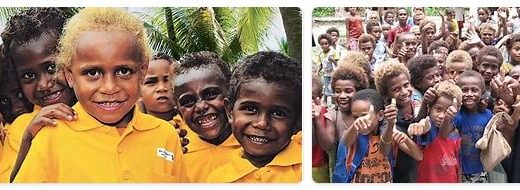Oceania Overview
Oceania, a collective term for the Pacific Ocean, first used by the Danish geographer Malthe Conrad Bruun in the early 1800s. The original definition only covers the Pacific Ocean Islands and thus not Australia, New Zealand or New Guinea. In modern language use, Oceania is a continent that includes Australia and New Zealand, but this article addresses in particular the oceanic islands.
The term Oceania is now used by the United Nations in a somewhat peculiar, politically marked way, including Australia and New Zealand, while Hawaii (US state of 1959) is omitted. None of the aforementioned definitions of Oceania as a continent is without problems; most contradictory is probably Malthe Bruun’s original, but even it contains major differences, for example, regarding the geological (plate tectonic) foundation of the western and eastern capitals.
The common feature of the Pacific Islands is that they are all quite small and also have geological and population similarities. The islands are volcanic or formed of corals; the population is Polynesian, Micronesian and Melanesian with a few Papuan people in the western periphery. In addition, European immigrants. New Zealand originally had a purely Polynesian population, but not Australia. To include these two countries on the continent speaks in particular geological conditions, but also the spread of flora and fauna.
The Pacific Islands are spread out over an enormous ocean area; 150 million km2, corresponding to 850 km 2 seas for every 1 km2 land. It is characteristic that the first landowner, Fernando de Magellan, crossed the ocean without obtaining land knowledge before reaching Guam after four months.
The climate is characterized by the sea everywhere; Temperatures vary only slightly throughout the year and between night and day and depend mainly on latitude and ocean currents. Most islands have tropical or subtropical climate. The climate is often called “paradise” and only modest demands on clothing and houses, but one serious drawback is the violent hurricanes that often ravage.
Plant growth is not interrupted by cold periods; it is thus rainfall and soils that are the limiting growth factors. Some islands, especially just north of the equator such as Jarvis, Palmyra and Kingman, are uninhabited due to drought, while the high islands of the monsoon belt have heavy rainfall on the wind side (in Hawaii more than 4000 mm per year), where there is abundant rainforest.. The reading pages have less rainfall and often a partly cultural savanna. The soil is in many places coral sand, but even this is often cultivated, i.e. with the use of compost in the so-called taro sumps. The high volcanic islands, on the other hand, often have rich cultivation opportunities.
Oceania was largely populated to the present extent before the arrival of Europeans. Later Europeans, Indians, Chinese and Japanese immigrated. Two archipelagos, Hawaii and Fiji, together comprise more than half of Oceania’s total population (excluding Australia and New Zealand). In both places, immigrants (Americans or Indians) form a very large part of the population. In most places, population growth is high, approx. 3% per year. Many small islands are now overcrowded; this also applies to several people who have had a tradition of population control (eg Tikopia).
The economy is still mainly based on agriculture and fisheries, but increasingly after World War II on tourism and development assistance. In the Hawaiian and Fiji Islands, modern agriculture is run with sugar and fruit growing for export. However, many of the islands still have self-sufficiency farming, especially based on sweet potatoes, bananas and taro, westward also on yams.
Some islands are strongly marked by mining; most important are the New Caledonia nickel mines, while the crude phosphate deposits in the Nauru and Ocean Island small islands are gradually buried.
The small island states are almost all developing countries, and their development opportunities seem rather limited. Resources are small, populations are spread over a vast area, and transportation is a problem. Freight transport is still mainly carried out by small ships that call even the smallest islands a few times a year to retrieve copra, the dried fruit flesh from the ubiquitous coconut trees.
As a consequence of the size of the islands, Oceania has no real big cities. Regional centers are Honolulu in Hawaii and Fiji’s capital, Suva. See Countryaah for capitals of each country in Oceania.
| Capital city | Thousands (2012) |
Area (km2) | |
| Independent states | |||
| Australia | Canberra | 23268 | 7700000 |
| Fiji | Suva | 890 | 18333 |
| Kiribati | Bairiki | 102 | 811 |
| Marshall Islands | Majuro | 68 | 171 |
| Federal States of Micronesia | Palikir | 106 | 701 |
| Nauru | 9 | 21 | |
| New Zealand | Wellington | 4328 | 266170 |
| Palau | Koror | 21 | 458 |
| Papua New Guinea | Port Moresby | 6310 | 462840 |
| Solomon Islands | Honiara | 584 | 28370 |
| Samoa | Apia | 194 | 2831 |
| Tonga | Nuku’alofa | 106 | 748 |
| Tuvalu | Funafuti | 11 | 26 |
| Vanuatu | Port Vila | 256 | 12200 |
| non-self-contained areas | |||
| American Samoa (USA) | Pago Pago | 67 | 197 |
| Cook Islands (NZ) | Avarua | 11 | 293 |
| French Polynesia | Papeete | 295 | 3266 |
| Guam (USA) | Agana | 183 | 541 |
| Hawaii (USA) | Honolulu | 1392 | 16760 |
| Niue (NZ) | Alofi | 1 | 239 |
| Northern Mariana Islands (USA) |
Garapan | 46 | 477 |
| New Caledonia (F) | Noumea | 256 | 18575 |
| Pitcairn (GB) | Adamstown | 0048 | 4.5 |
| Tokelau (NZ) | Fakaofo | 1.3 | 12 |
| Wallis and Futuna (F) |
Mata-Utu | 15 | 250 |
| Political classification | |||
Source: Allcitycodes
Music in Australia
Indigenous music
In the life of the indigenous people, music and dance play an important role, not least ritually and socially. The music is added to magical power, and is used not only to make contact with the gods, but also to control them. An example of this is the rain ceremonies. Tribal history is enshrined in lyrics, which must therefore be conveyed with the greatest accuracy by a specially appointed person, who, by virtue of his responsible duties, enjoys high social status. The style of music varies widely from region to region, but is generally rhythmically complex.
The most characteristic instrument, especially related to Arnhem Land, is the didjeridu, a hollow wooden stick, 60–240 cm long and 5–15 cm in diameter. Didjeridu is used both as a trumpet-like instrument and to enhance and change the character of the voice.
Among indigenous people who have been integrated into modern Australian society, calypso- like songs, protest songs and similar forms of music are popular.
Arts
With the English colonization came military orchestras, which in addition to military music also performed opera excerpts and light symphonic music. They also recruited the first string orchestras. Melbourne’s Royal Philharmonic Society was founded in 1852. The composer and pianist Percy Grainger (1882–1961) gained international importance. Parallel to the emergence of a folk-song tradition with English roots, a choral tradition developed.
The development of music education began with the creation of music chairs at the universities of Adelaide (1884) and Melbourne (1891) and in the first music conservatories (1894 and 1898).
Australia got its first internationally renowned performer in classical music with soprano Nellie Melba, eg. Helen Porter Mitchell (1861-1931). Melba was celebrated as one of the greatest singers of his time and performed in leading opera scenes in Europe.
Today’s music scene
The public music scene is built on a European pattern, organized around opera houses, symphony orchestras and other major institutions and with mass media as an important production and distribution form. Music festivals also play an important role. Both in art and pop music, the influence of European and American music is felt. In recent years, many Australian athletes have become very prominent internationally, not least in the rock.



